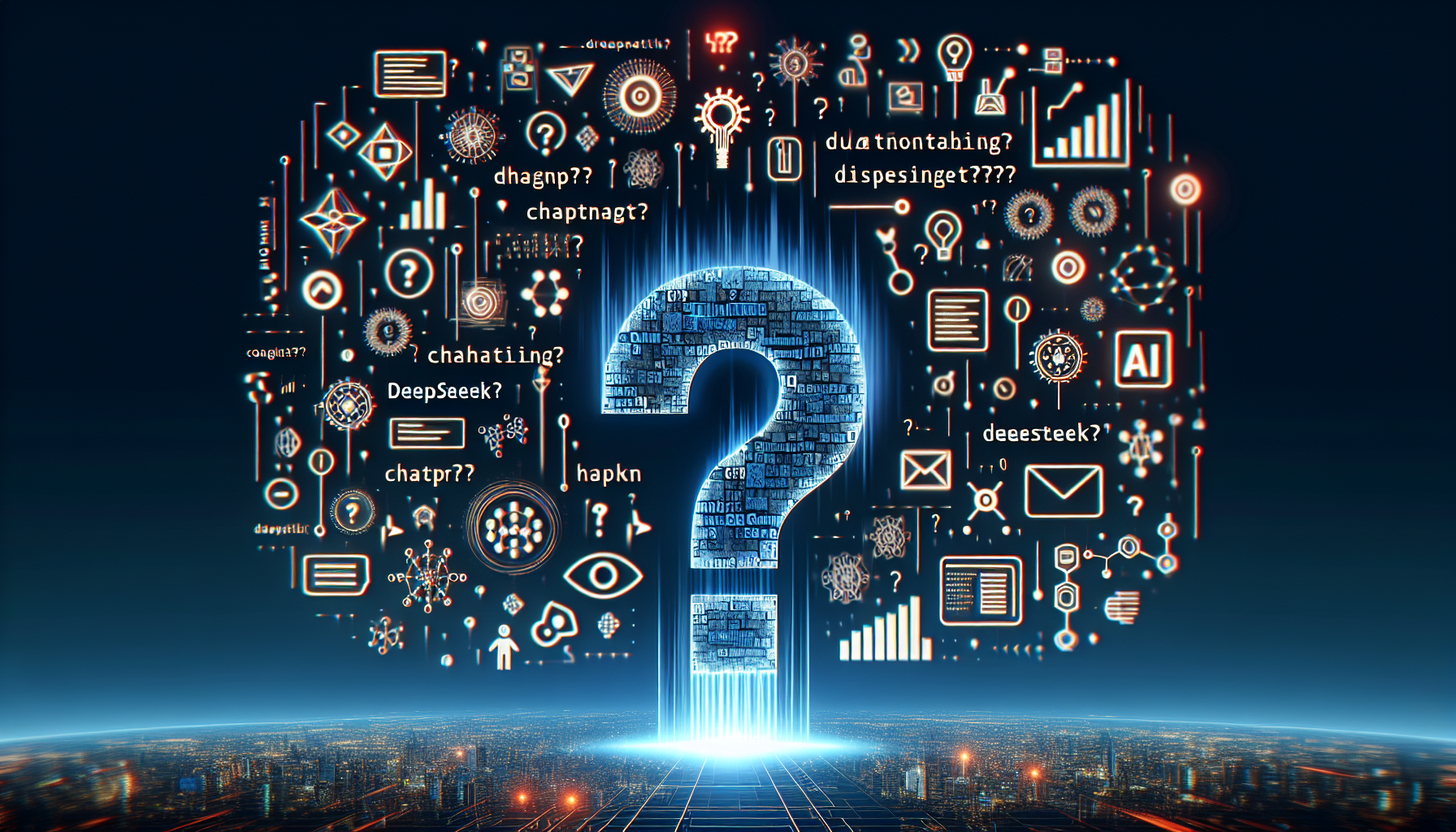The Ascent of DeepSeek: Innovation or Controversy?
Artificial intelligence continually expands the limits of what can be achieved, but with progress comes examination. DeepSeek, a startup from China specializing in AI, has recently garnered attention for its revolutionary AI model, DeepSeek R1, which possesses capabilities that may compete with OpenAI’s ChatGPT. Nevertheless, concerns about originality and ethical AI practices have surfaced, igniting a fervent discussion within the tech arena. Let’s explore the main points pertaining to DeepSeek, its resemblances to ChatGPT, and the broader consequences for AI innovation.
What Is DeepSeek R1 and Why Is It Controversial?
DeepSeek R1 is a sophisticated reasoning AI model that has swiftly attracted interest for its competence in executing tasks comparable to that of ChatGPT. The Chinese AI company responsible for it asserts that they have crafted the model through inventive training methodologies. However, OpenAI contends that the developers at DeepSeek may have breached their terms of service by utilizing ChatGPT to develop their own framework.
This claim generates irony, as OpenAI has itself been criticized for harvesting extensive quantities of internet data, including copyrighted material, to train ChatGPT. The scenario raises moral dilemmas regarding intellectual property and the delicate distinction between inspiration and infringement in AI innovation.
Security Vulnerabilities Expose DeepSeek
Adding to the turmoil, security analysts have recently uncovered a major flaw in DeepSeek’s system. This vulnerability not only compromised sensitive information but also exposed significant similarities between DeepSeek and OpenAI’s frameworks, notably the styling of their API keys. Such revelations imply that DeepSeek may have derived more than mere inspiration from OpenAI’s design. This finding has intensified doubts about whether DeepSeek’s technological advancements are solely its own.
The Role of Originality.ai in Detecting AI-Generated Content
Enter Originality.ai, a tool created to discern whether text is produced by humans or machines. The company performed thorough experiments on DeepSeek using 150 prompts, involving tasks to rephrase human-generated text and craft articles from the ground up. Their results indicate that DeepSeek’s output closely mirrors that of ChatGPT, further substantiating claims that the Chinese AI model could be a derivative product.
The capabilities of Originality.ai underscore the increasing necessity for tools that identify AI-generated content, particularly as generative AI models gain traction. These detection instruments are critical for upholding transparency and accountability in AI-driven fields like content creation, education, and journalism.
The Broader Implications for AI Development
The debate surrounding DeepSeek and ChatGPT has initiated a wider dialogue about ethics, originality, and the trajectory of AI advancement. As AI models become increasingly sophisticated, delineating what represents fair use, intellectual property, and ethical training practices will grow more complex. Regulators, developers, and stakeholders must collaborate to formulate clear guidelines that foster innovation while safeguarding creators’ rights.
Conclusion
The emergence of DeepSeek R1 and its striking resemblance to ChatGPT serves as a reminder of the challenges and ethical predicaments accompanying swift progress in AI. While innovation merits celebration, it should also be paired with accountability and a commitment to ethical standards. As the AI sector continues to progress, it’s vital to achieve a balance between inspiration and originality to secure a future where technology serves everyone.
Q&A: Addressing Reader Questions About AI and DeepSeek
Q1. What is DeepSeek R1, and how is it similar to ChatGPT?
DeepSeek R1 is a reasoning AI model created by a Chinese startup, and it shares capabilities and system architecture similarities with OpenAI’s ChatGPT. These parallels have raised concerns about whether DeepSeek’s creators utilized ChatGPT as a foundation for their model.
Q2. Why is OpenAI accusing DeepSeek of infringement?
OpenAI asserts that DeepSeek may have breached its terms of service by leveraging ChatGPT’s technology to develop its models. This allegation stems from purported similarities in the architecture and functionalities of the systems.
Q3. What security vulnerabilities were found in DeepSeek?
Researchers identified a significant weakness in DeepSeek’s framework, compromising sensitive information and revealing congruences with OpenAI’s API key format. This has fostered further skepticism regarding the originality of DeepSeek’s technology.
Q4. What does Originality.ai do, and how does it relate to this controversy?
Originality.ai is a tool designed to ascertain whether text is human-produced or AI-generated. The company conducted evaluations on DeepSeek’s outputs, noting that they showed strong similarities to ChatGPT’s, which reinforces OpenAI’s accusations of infringement.
Q5. What are the ethical concerns surrounding AI development?
Key ethical issues encompass intellectual property violations, transparency in training practices, and the unauthorized use of copyrighted content. As AI technology progresses, these matters will necessitate clearer guidelines and regulations.
Q6. How can tools like Originality.ai benefit industries?
Detection tools such as Originality.ai are crucial for upholding transparency in sectors like journalism, education, and digital marketing. They assist in ensuring that AI-generated content is appropriately disclosed and that the rights of creators are honored.
Q7. What’s next for AI regulation and development?
As controversies like DeepSeek versus ChatGPT unfold, it is likely that governments and industry leaders will advocate for stricter regulations and ethical standards to guarantee fair use and protect intellectual property in AI advancement.